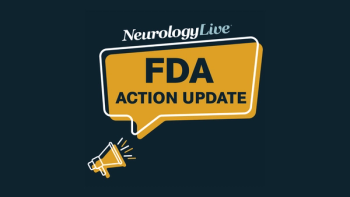
Using On-demand Therapies for the Management of OFF Episodes in PD
Rajesh Pahwa, MD, comments on the different routes of administration of on-demand therapies and medication absorption for the management of OFF episodes in Parkinson disease.
Episodes in this series

Stuart Isaacson, MD: Raj, how often do you find that patients you’re treating with medications that are absorbed through the GI [gastrointestinal] tract can’t get that right balance or a good reduction OFF? How often do you turn to non-GI absorbed medication? Transdermal, intercostal, inhalation, subcutaneous—you have so many options. In switching from this idea of getting a GI-absorbed medication in the cornerstone of oral levodopa and other adjunctive medications, we think, “Maybe I need to do something that’s not absorbed through GI tract, whether it’s surgical or medical.”
Rajesh Pahwa, MD: When I talk about on-demand therapies, I’m trying to bypass the gut because with on-demand therapies I want this medication to work fast. It may not last as long, but it needs to work faster than taking an extra pill or chewing a pill or taking a pill with a carbonated drink. All those still must go through the stomach, where the patient often has slow gastric emptying. Make it to the slow intestine to get absorbed. When my patient says, “I take a dose of medicine, and it takes an hour for it to start working,” something is going on in their gut if the medicine isn’t working fully for them.
At that stage, I must look at on-demand therapies. As you are aware, there are 3 on-demand therapies: inhalation levodopa, sublingual apomorphine, and injectable subcutaneous apomorphine. I have 3 on-demand therapies that bypass the gut. When I’m looking at someone who needs an on-demand therapy, where you do 1 reason or the other, the gut is delaying the absorption of levodopa. Using inhaled levodopa is an option for them. It will start working within 10 minutes, give them a good benefit by 30 minutes, last for about 60 minutes, and fill the gaps. This levodopa tablet goes from the stomach to the small intestine, so it eliminates the delayed ON that this patient might be having.
The challenge with inhaled levodopa is that it’s still a very tiny dose. They’re getting equivalent to half a tablet of 25/100-mg tablet. For some of my patients taking a 25/250-mg tablet 4 times a day, that may not be enough to give them an ON. Some patients using inhaled levodopa have other adverse effects, such as coughing, and I have to look at other options for them. Using sublingual apomorphine is another choice I have. I give the first dose under medical supervision.
I don’t personally use antiemetics with apomorphine anymore. I do prescribe them on the lowest dose. Have them take the lowest dose for about 5 days or so. If they don’t have any adverse effects, then I tell them to go to the next higher dose and then next higher dose. Some people give the 10-mg dose the first day, in the afternoon give them the 15-mg dose, and the next day give them a 20-mg dose. That’s much more likely to cause adverse effects whether it’s nausea or orthostatic hypertension.
The third option is using subcutaneous apomorphine injections. Just like with sublingual, I start at the lowest dose and very slowly increase the dose so that they don’t have any adverse effects such as nausea or orthostatic hypertension. All these drugs are bypassing the gut, which gives them a faster onset of action.
Transcript Edited for Clarity
Newsletter
Keep your finger on the pulse of neurology—subscribe to NeurologyLive for expert interviews, new data, and breakthrough treatment updates.
























